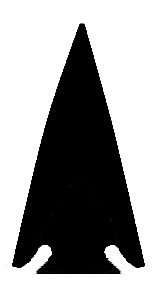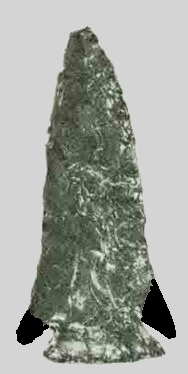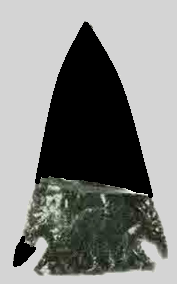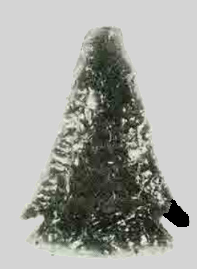Other Websites with Detailed Information:
Name Details:
Named By: Angel
Garcia Cook
Named For:
Date Identified:
1967
Type Site: Cueva de la Nopalera, Hidalgo
Xihuingo
AKA: Marcos - Tepeapulco
Cluster:
Commonly Utilized Material:
Obsidian
Date:
Cultural Period:
1,800 - 900 B.P.
200 - 1,100 d.n.e.
Late Primer to Segundo Period
Glacial Period:
Culture:
Outline is Representative of Size and Shape:
Description of Physical Characteristics and Flaking Pattern:
This is a
broad medium
triangular narrow corner notch point with an elliptical to flattened cross section. The blade is broad and is most commonly excurvate,
but may vary to straight or incurvate. Narrow
fine notches enter from the corner of the blade forming thin delicate barbs that terminate in a sharp barb tip Notches are enter at a 45
to 50
degree angle forming an expanding stem. The base may vary from
straight to slightly convex. This point has a high quality of workmanship and a random flaking pattern.
Size Measurements: Length - 43 to 115 mm, Stem Length - 8 to 11 mm, Blade Width -
30 to 47 mm, Basal Stem Width - 26 to 38 mm, Neck
Width - 20 to 28 mm, Notch Depth - 5 to 8 mm, Thickness - 6 to 9 mm
Distribution:
Distribution Comments:
This type has been reported at Cueva de la Nopalera, Hidalgo, Mexico. These points ate thought to be
found throughout the Valley of Mexico.
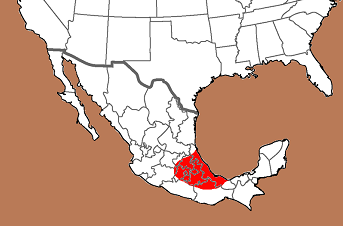
Related / Associated Points:
Additional Comments:
Cook (1967) differentiates the difference between
the Marcos-Tepeapulco and Xihuingo based on the degree that the angle enters
the preform. The Marcos-Tepeapulco has an angle of 45 degrees while
the Xihuingo has an angel at about a 50 degree. However, even on the
examples of both types, some have one notch at 45 degrees and the other
notch at 50 degrees. Both types were found in association and at the same
levels suggesting that these are not separate types, but slight variations
within the same type. For this reason I included both types into this
type.
When Cook conducted his research, he took the typology from Texas and
applied it to all of the points in his research. He did not consider,
or did not have access to, the distribution of the types. As long as
the overall outline matched up, he applied the name to the point. The
Marco type does extend into Mexico, but has not been reported in southern Tamaulipas, Tehuacan Valley, or the Valley
of Mexico. This may not be a true Marcos variation, but could be an
extension of the Elko type, or it's own independent type, more research is
needed. For this reason, I included both types to the Xihuingo type
instead of the Marcos-Tepeapulco type.
Other points in this Cluster:
Point Validity:
Cook was an influential anthropologist for the Instituto Nacoinal de
Antropologia e Historia. He conducted extensive research in the Basin
of Mexico. This type was defined in his research at Cueva de la
Nopalera.
.
Age Details:
These points were associated with the upper
layers of level 3 and had primary usage in level 2 at Cueva de la Nopalera.
Pictures Provided By:
Cook, 1967
References: (See Reference Page, Entry Number):
8, 23, 30, 44, 115
Xihuingo Projectile Point, Xihuingo Arrowhead
